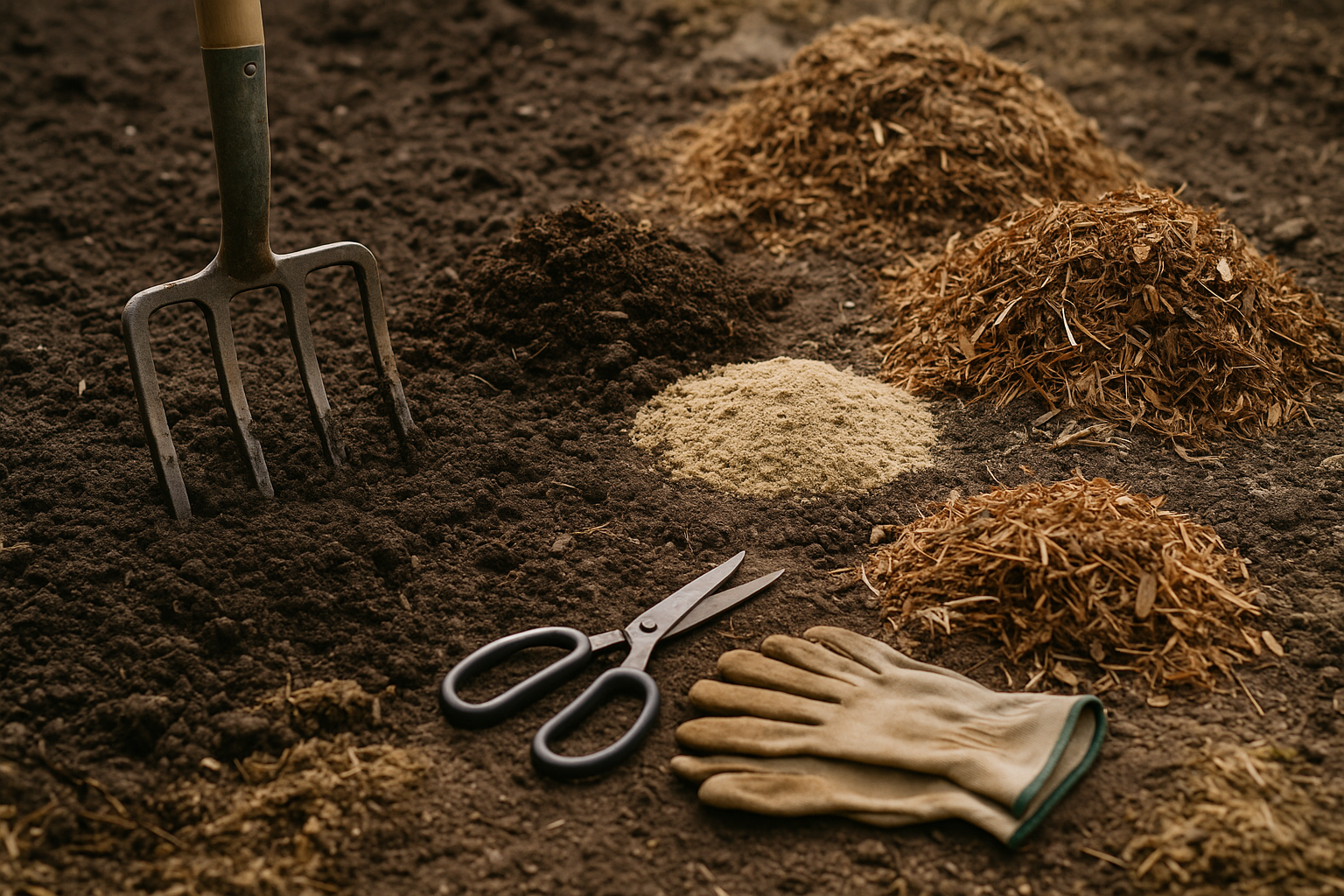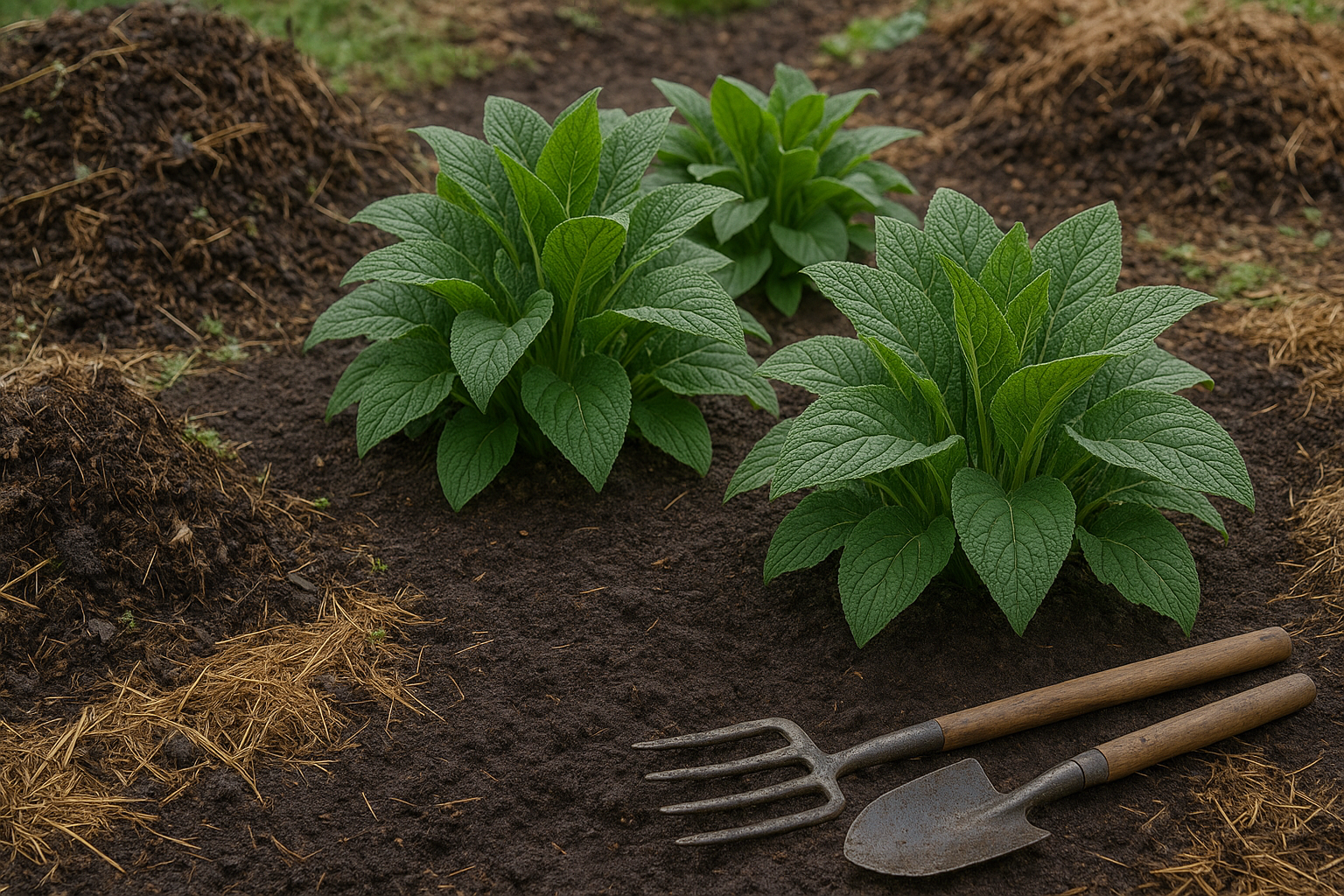Introduction
The best soil for comfrey is a crucial factor for anyone looking to harness this nutrient-rich plant’s power in their garden or permaculture setup. Comfrey is prized for its ability to improve soil health, provide potent green manure, and support pollinators, making it a staple in sustainable gardening. But to get the most out of comfrey—lush leaves, rapid regrowth, and deep nutrient extraction—you need to pay careful attention to where and how you plant it.
The quality of your soil directly determines how well your comfrey will thrive and the benefits it can provide. In this article, we’ll explore the characteristics of ideal comfrey soil, tips to enrich poor soils, and common mistakes gardeners make when establishing comfrey patches. Whether you’re a seasoned permaculturist or growing comfrey for the first time, these soil optimization strategies will help you unlock the full potential of this garden powerhouse.
Understanding Comfrey and Its Soil Needs
Comfrey is a hardy, versatile perennial herb prized by gardeners for its ability to improve soil health, provide nutrient-rich mulch, and serve as a natural fertilizer through composting or liquid feeds. With deep, vigorous taproots that can reach several feet underground, comfrey mines nutrients like potassium, calcium, and phosphorus from subsoil layers, making them available to other plants when its leaves are harvested and used as mulch.
In its natural habitat, comfrey thrives in moist riverbanks and meadows, which reflects its preference for well-drained yet moisture-retentive soils. To grow healthy comfrey at home, choose a site with good drainage to prevent root rot but that doesn’t dry out completely; raised beds or slightly sloped ground can work well.
Comfrey performs best in nutrient-rich, loamy soils amended with compost or well-rotted manure. A slightly acidic to neutral pH, around 6.0 to 7.0, is ideal, although comfrey is remarkably adaptable and will tolerate a range of conditions. Avoid heavy clay or waterlogged spots, as standing water can lead to root problems.
Many gardeners plant comfrey near fruit trees, in compost zones, or as part of a permaculture setup for its soil-enhancing benefits and low-maintenance nature.
Ideal Soil Characteristics for Comfrey
Comfrey thrives best in loamy, well-draining soil that retains moisture while allowing excess water to drain away quickly. Loam combines the best qualities of sand, silt, and clay, creating an ideal balance between drainage and moisture retention. This balance helps comfrey avoid waterlogged roots while staying hydrated during drier spells.
The ideal soil pH for comfrey is between 6.0 and 7.0, a neutral to slightly acidic range that maximizes nutrient availability. Outside this range, minerals like calcium and phosphorus become less accessible, which can potentially stunt growth.
High levels of organic matter and rich humus are especially important, as comfrey is a heavy feeder that needs a fertile environment. Mixing in well-rotted manure, compost, or leaf mold before planting can significantly boost soil fertility. Additionally, ongoing mulching helps with moisture retention and improves soil structure.
Good soil aeration is key too; compacted soils restrict root development and hinder the plant’s ability to absorb nutrients. As a practical tip, dig deeply and loosen the soil thoroughly before planting, breaking up clumps and removing stones. If you notice water pooling after heavy rain, consider raising your beds or adding more compost to improve drainage.
With these soil foundations in place, comfrey will reward you with lush foliage and long-term productivity—perfect for use as mulch, compost activator, or herbal remedies.
How to Prepare Your Soil Before Planting Comfrey

Preparing your soil before planting comfrey is essential for healthy, lush plants. Start by choosing a spot with good sunlight and clear away any weeds, rocks, or debris. For new or existing beds, loosen the soil to a depth of at least 12 inches using a garden fork or spade.
If you’re working with heavy clay soil, mix in coarse sand or fine gravel to improve drainage and prevent compaction. Then add several inches of compost and well-rotted manure to boost fertility—a must for robust comfrey growth. Sandy soils benefit from similar layers of compost and manure, along with a bit of clay-rich topsoil to help retain moisture and nutrients.
Work these amendments thoroughly into the soil to ensure a balanced texture and promote healthy root development. A soil pH between 6.0 and 7.0 is ideal, so test your soil and adjust with garden lime or sulfur as needed.
Once your bed is prepared, apply a 2- to 3-inch layer of mulch around the area using straw, leaf mold, or shredded bark. Mulching is more than just a finishing touch: it insulates the soil, protecting comfrey roots from temperature swings and helps lock in precious moisture, which comfrey loves. Plus, mulch suppresses weeds so your comfrey can establish itself without extra competition.
By investing time in soil prep now, you’ll set your comfrey up for years of healthy, vigorous growth.
Troubleshooting Common Soil-Related Problems
Comfrey is a resilient plant, but soil issues like poor drainage, low fertility, and compaction can slow its growth and limit its benefits. If your soil tends to stay soggy or forms puddles after rain, drainage might be the problem. Try planting comfrey on raised beds or mixing in coarse sand or compost to improve aeration.
For low fertility, which often appears as yellowing leaves or stunted plants, enrich the soil with well-rotted manure or a balanced organic fertilizer in early spring and again mid-season.
Soil compaction is another common issue, especially if you notice water running off the surface or roots struggling to penetrate. Using a garden fork can help break up hard soil layers, and mulching with straw or leaf mold keeps the surface loose over time.
To maintain healthy soil:
- Add organic matter each year
- Monitor moisture levels during dry spells
- Test your soil’s pH every couple of years to keep it in the optimal range of 6.0–7.0
Being proactive with these simple steps ensures your comfrey patch stays productive and resilient for seasons to come.
Maintaining Fertility and Long-Term Soil Health
To keep your garden soil fertile and healthy year after year, ongoing feeding with natural fertilizers and compost is key. Instead of relying on quick chemical fixes, work slow-release organic matter into your beds each season—think well-rotted compost, manure, or worm castings. These not only boost nutrients but also improve soil structure, helping roots breathe and water drain properly.
Crop rotation is another smart practice: by changing where you plant heavy feeders like tomatoes or corn, you avoid depleting certain nutrients and keep pests guessing. You can also try interplanting—growing beans alongside squash or carrots, for example—to let different plants support each other and the soil.
Don’t overlook regular mulching. A two-inch layer of straw, shredded leaves, or grass clippings helps keep moisture in, stops weeds, and slowly feeds the ground as it breaks down. Lastly, water your garden deeply and consistently, especially during dry spells. Shallow, frequent watering encourages weak roots, while deep soaking strengthens plants and helps nutrients move through the soil.
Following these simple habits makes a noticeable difference season after season, giving you healthier plants and richer harvests.
Conclusion
Proper soil preparation and regular maintenance are the foundation for growing healthy comfrey. Start by loosening the soil and adding compost or well-rotted manure to boost nutrients. Keep weeds in check and mulch around the plants to retain moisture.
Every garden is unique, so don’t be afraid to experiment and see what works best in your space—pay attention to how comfrey responds to different conditions.
For more tips or if you have questions, browse our related articles, or share your experiences in the comments below. Your feedback could help fellow gardeners improve their own comfrey patches!
